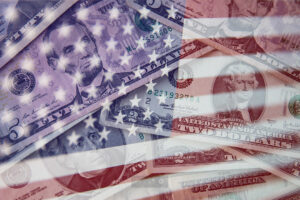




Philippines Trade Update: Trade trajectories trend along
 DOWNLOAD
DOWNLOAD

Policy Rate Updates: Double cut finale
 DOWNLOAD
DOWNLOAD

Monthly Economic Update: One for the road
 DOWNLOAD
DOWNLOAD


US debt default may rattle markets

THE PHILIPPINE ECONOMY and markets are unlikely to be spared from the massive fallout from a possible debt default by the United States, analysts said.
On Tuesday, debt ceiling talks between representatives of President Joseph R. Biden, Jr. and congressional Republicans ended with no signs of progress as the deadline to raise the government’s USD 31.4-trillion borrowing limit or risk default ticked closer.
“An extreme scenario of a protracted US default could lead to some downward pressure on most emerging market assets and Philippine markets aren’t likely to be spared,” Bank of the Philippine Islands Lead Economist Emilio S. Neri, Jr. said in a Viber message.
The US Treasury department has already warned it will be unable to pay the government’s bills beyond June 1 without an increase in the debt limit. This is expected to trigger the first-ever US default, which may push the economy into a recession and plunge global markets into chaos.
“A debt default would be a dire event, with an unpredictable but massive fallout on the global economy and the financial markets. No one is prepared for this,” Papa Securities, Inc. Equities Strategist Manny P. Cruz said in a Viber message.
Diversified Securities, Inc. Equity Trader Aniceto K. Pangan said a default by the world’s largest economy will likely trigger a global financial crisis similar to what happened in 2007.
“With this, the global recession will again be ignited. Definitely, the Philippines will be among the affected as it relies heavily on remittances plus its BPO (business process outsourcing), which contributes a lot to our economy,” Mr. Pangan said.
Pantheon Macroeconomics Chief Emerging Asia Economist Miguel Chanco likewise said that the default would have a big impact on the Philippine economy.
“[The Philippines] relies heavily on US demand for both its merchandise and services exports, while a pinch to the US labor market could indirectly affect remittances from the millions of Filipinos living in America,” Mr. Chanco said.
The United States was one of the top destinations of Philippine-made goods in March with USD 877.89 million, accounting for 13.4% of the total exports during the month.
Cash remittances by overseas Filipinos jumped by 3% year on year to USD 2.67 billion in March. The US accounted for 41.4% of total remittances to the Philippines in March.
FLIGHT-TO-QUALITY
Analysts also warned of a possible flight-to-quality scenario, which occurs when a large number of investors move their asset allocation away from riskier investments into safer ones.
“Most likely we will see flight-to-quality trades towards the Japanese and Swiss assets as carry trades could be unwound. We are hoping US politicians will be able to resolve this issue to ensure they aren’t caught flat-footed in case Asian geopolitical tensions escalate,” BPI’s Mr. Neri said.
Pantheon’s Mr. Chanco said in the event of a US default an “understandable flight to safety would have a detrimental impact on regional markets,” including the Philippines.
On the other hand, ING Bank N.V. Manila Senior Economist Nicholas Antonio T. Mapa said some investors may still have confidence in the US despite its troubles.
“We could see some investors still seek the relative safety of US assets or other traditional safe havens. This may result in a knee-jerk reaction of selling in the local equity and bond markets,” he said.
As of Tuesday, there was a lack of clear progress in Washington on the debt ceiling talks. A deal to raise the debt limit should be approved by both chambers of the US Congress.
“For obvious reasons, it’s very difficult to know what might happen should the US default, as that would bring the global economy and financial markets into unprecedented territory,” Mr. Chanco said.
Makoto Tsuchiya, assistant economist from Oxford Economics Japan, said that a deal is still possible beyond the June 1 deadline since the US Treasury could issue securities to roll over maturing debt.
“While the Treasury will still need to pay interest payments, there are no large payments in early June. The first notable interest payment will occur in mid-June, when the Treasury will have sufficient cash from tax collections, and the first real risk of a missed interest payment would be in late July,” he said. — By Keisha B. Ta-asan and Luisa Maria Jacinta C. Jocson, with Reuters
This article originally appeared on bworldonline.com





 By BusinessWorld
By BusinessWorld